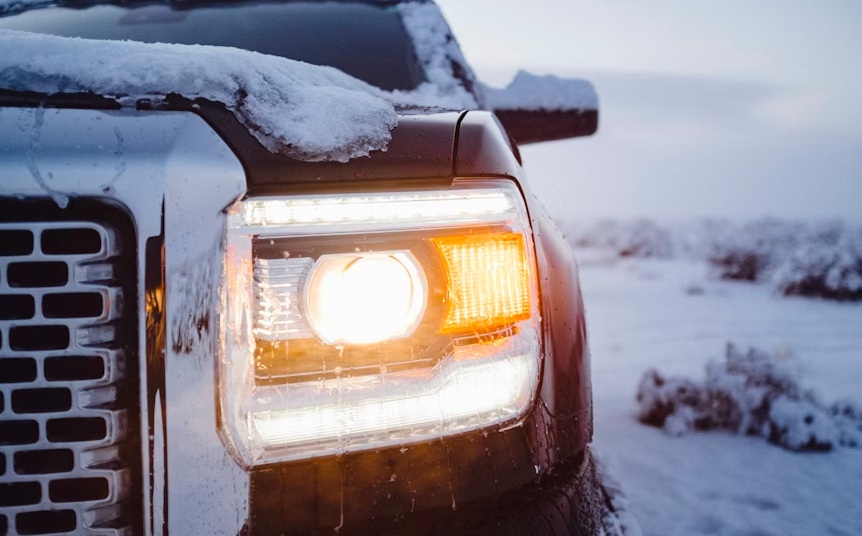Winter road trips can be beautiful and adventurous, but they require far more careful preparation and driving skills. Roads in some areas become dangerous because of the climate and topography.
In Colorado, February 2025 brought heavy snow and roadway closures across the Denver metro area due to hazardous conditions. Traffic was impacted, and several crashes still happened, despite law enforcement being in action. The demand for auto collision repair in Denver probably surged, with drivers encountering accidents with or without their fault.
Simply relying on defensive driving techniques is not enough to navigate the unique hazards of winter weather and road conditions. Drivers must consider several other factors and prepare to deal with them to ensure a safe journey.
In this article, we will explain why they should think beyond just being cautious behind the wheel.
Limited Visibility
The Department of Transportation highlights the perils of poor visibility for drivers. Data shows that 38,700 vehicle crashes occur in fog annually. The painful part is that such mishaps claim 600 lives and leave more than 16,300 injured. The probability of fog-related visibility issues is higher during the winter months.
With a drastic reduction in visibility, safe driving is challenging. Snowfall, fog, sleet, and blowing winds can obscure your view of the road, traffic signals, and other vehicles. Early nightfall means less daylight, further limiting how well drivers can see and react to hazards. Frost or fogged windows can also impair your sight if your vehicle’s defrosting system is inadequate or if your windshield wipers are worn out.
Driving in low visibility calls for more than defensive skills. Rather, it requires proactive measures such as clearing all snow from headlights. You must use low beam headlights during precipitation and avoid high beam use as it can reflect off snow and worsen visibility. Planning trips during daylight hours and using GPS navigation can also help reduce the danger of poor visibility conditions.
Reduced Traction
Reduced traction between tires and the road surface due to snow, ice, slush, and black ice is another challenge drivers face. These conditions increase the chances of skidding and lengthen stopping distances significantly, sometimes up to ten times longer than normal on icy roads.
Black ice is particularly dangerous because it is nearly invisible. A USA Today article compares the roads to winter skating rinks when they have black ice over them. Most drivers don’t even realize the impact until their vehicle starts spinning on it. Black ice is often present on shaded or bridge areas, even when the rest of the road looks clear.
Winter driving requires adapting speed and stopping techniques. Drivers should reduce their speed well below the posted limits and increase following distance. Abrupt maneuvers, such as sudden acceleration, braking, or sharp turns, must be avoided to maintain control. Additionally, using winter tires or chains improves grip on snow and ice, ensuring safety.
Vehicle Issues
Winter conditions impose extra stress on vehicles that can cause breakdowns or accidents if not properly addressed. Cold temperatures affect tire pressure, battery performance, and fluid levels. Snow and ice buildup can impair brakes, suspension, and windshield wipers. Mechanical failures or insufficient winter preparation can leave travelers stranded in inclement weather.
Regular vehicle checkups are essential during the season. Experts test the battery, inspect tires for tread and pressure, and top off antifreeze, windshield washer fluid, and oil suited for cold temperatures. If there was a collision, it is best to use OEM (Original Equipment Manufacturer) parts for replacement. Denver Auto Body recommends them for fit, finish, and safety.
Besides professional checks, you must clear all ice and snow from the headlights, mirrors, and roof of your car. It is necessary to maintain visibility and avoid snow falling onto other vehicles on the road. Always carry basic tools and spares, and know the basic repairs. Preventative vehicle maintenance is as important as careful driving to avoid winter roadside emergencies.
Distracted and Stressed Drivers
Winter road trips can be mentally taxing, leading to distracted or stressed driving behavior that compounds the risks. Insurance Business America cites a Canadian survey, stating that winter driving is more stressful for drivers. Factors like low visibility and icy roads lead to driving anxiety at this time of the year.
Additionally, distractions like checking GPS while driving, using phones, or eating increase the risk of crashes. Drivers should prime their GPS and plan routes before setting off to overcome this risk. Taking breaks to rest and reduce fatigue, ensuring clear communication if traveling with others, and driving sober are crucial steps.
Staying calm and attentive allows for better reaction to sudden hazards such as slippery lanes or stalled vehicles. Being mentally prepared and minimizing distractions can reduce the dangers on winter roads. At the same time, you should keep an eye on distracted drivers and maintain a safe distance from them.
FAQs
Are US roads dangerous in winter?
Yes, winter roads in the US become more dangerous due to several factors. Snow, ice, reduced visibility, and colder temperatures impair vehicle performance. Many vehicle crashes happen during poor weather conditions, including winter weather. Snow and ice increase the chances of accidents, making winter driving riskier without proper preparation and adjustments.
What emergency supplies to carry on winter road trips?
Carrying a winter emergency kit is crucial. Ideally, it should include warm clothing and blankets, extra food and water, a flashlight with extra batteries, and a first aid kit. Also, carry a windshield scraper and fluid, jumper cables, a shovel, and traction aids like sand or kitty litter. Hand warmers, a fully charged phone, and portable chargers are also advised to help manage cold and emergencies while waiting for help.
What is the best time to drive during winter?
The best time to drive during winter is during daylight hours when visibility is optimal. Avoiding early morning and evening when temperatures are lower limits exposure to black ice and frost. Monitoring weather forecasts and planning trips on days without active storms reduces risks. If driving at night or in poor weather, slower speeds and extra caution are essential.
Winter driving has a fair share of challenges, but awareness can reduce the likelihood of mishaps. Before hitting the road, you must commit to defensive driving. However, that is just the start. Drivers must prepare their vehicle thoroughly, be mentally and physically ready, and adjust their driving style to the unique challenges posed by winter conditions to stay safe on the road.

